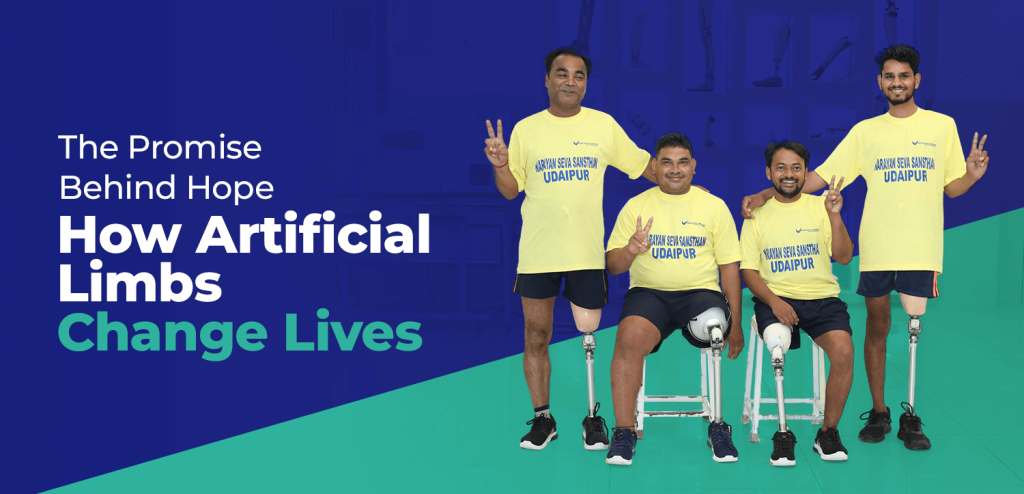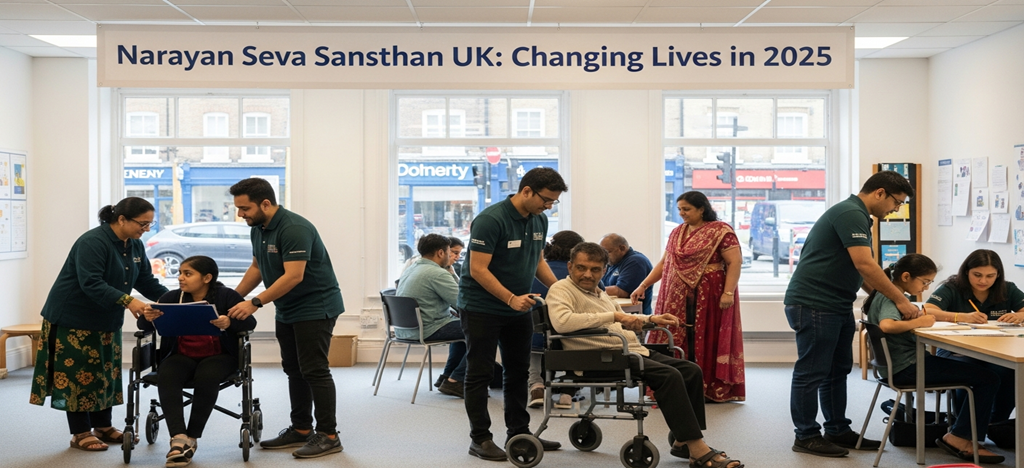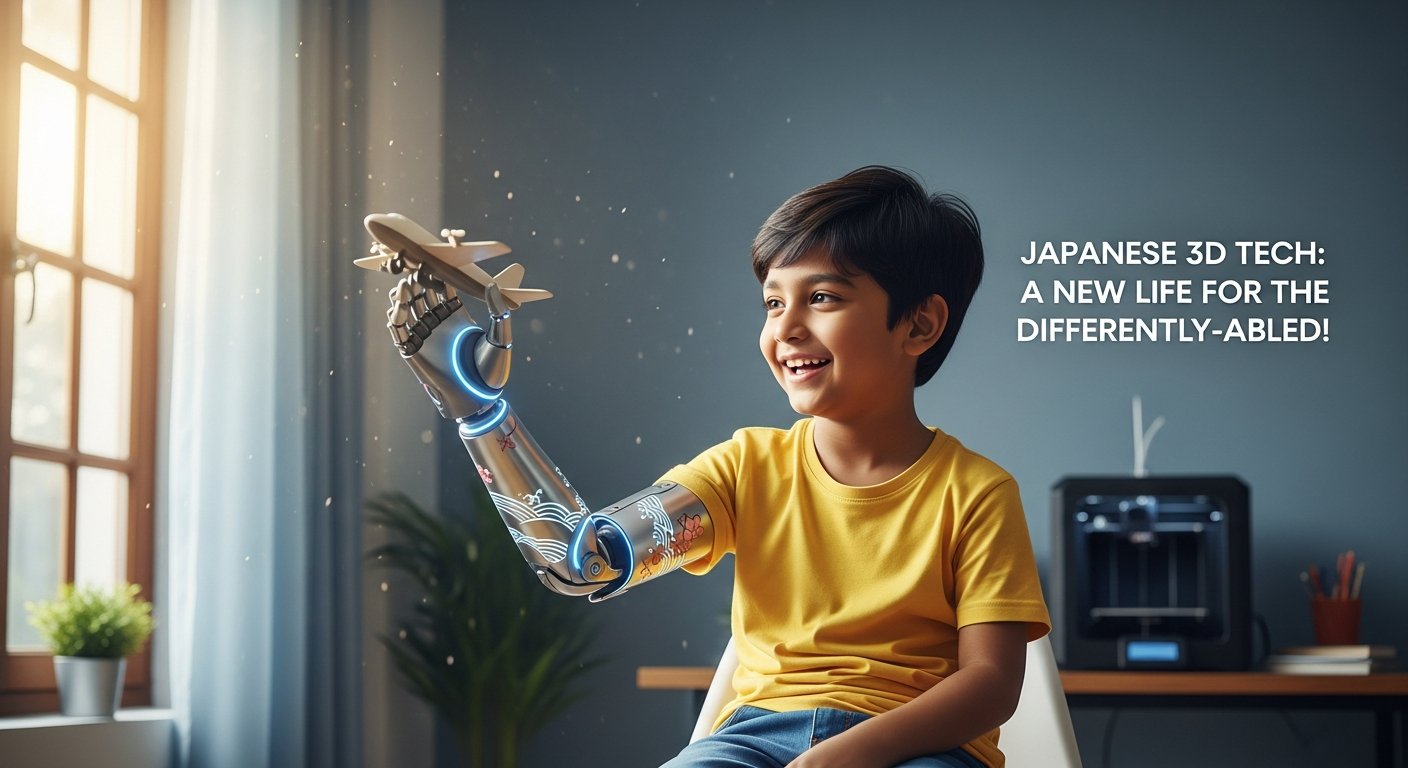Imagine a person who has unfortunately lost one of their limbs. This has impacted him both physically and emotionally. Physically, they lose part of their mobility, and emotionally, they may feel that a part of their identity is lost. Now, consider the day they receive an artificial limb going to be on an artificial limb: they can stand up again, take a couple of steps, even walk to the next stage of their life. That is not merely a mechanical transformation. It’s a promise, a ray of hope, pride, and a second chance.
Here, we discuss the way the process of artificial limb donation (and the term itself, donation for artificial limb) is not just about giving a device; it is about transforming lives. We will take you through a step-by-step guide to help you understand the need to donate and how it can change people’s lives. To make donations easier, several organisations, such as Narayan Seva Sansthan, connect UK donors with recipients in other countries and help fulfil that promise.
Let’s become a part of the change.
How Artificial Limb Donation Restores Lives: Step by Step
#1 Recognising the Need
The initial phase in this process is recognition. Millions of people around the world lose limbs every year due to accidents, diabetes, or congenital conditions. The loss or absence of a limb, whether through trauma (accidents, conflict), disease (diabetes, vascular problems), or congenital causes, has a significant impact on the life and independence of a person. In 2024, it has been estimated that more than 40 million individuals in the world needed prosthetic and orthotic devices, but only 5-15 percent of them could access them.
This disparity highlights the significance of donations for artificial limb programs; they help reduce inequality by creating new opportunities for individuals to stand when healthcare is unavailable.
Remember, a prosthetic limb does not just substitute a section of the body; it gives a person the right to live.
#2 Knowing How Artificial Limbs Help
Understanding how an artificial limb can change a life is important.
Devices like the artificial leg are used to replace a missing limb and enable one to walk, stand, and move, which would be extremely difficult or impossible otherwise.
Better mobility leads to an increase in independence, a reduction in dependence, and an improvement in quality of life.
Modern innovations imply that prosthetic limbs, in the upcoming days, will be lighter, more comfortable, and more connected to the body and lifestyle of a user.
Tip to donors: Here is the ripple effect to keep in mind when you read the phrase artificial limb donation, mobility = independence = confidence = community engagement.
#3 Practical Steps for Donation of Artificial Limb
This is how it generally goes when you make a contribution, and the next thing you see, after a while, is a fitted limb to someone who needs it.
Step 1: Donation & Fundraising
- Funds donated by donors are used to fund the provision of artificial limbs (or “donation for artificial limb”) in a supported programme.
- The organisation to which you have donated collects the resources and plans how the resources will be shared in the most appropriate manner.
Step 2: Selection and Assessment of Recipients
- The field team or partner clinic will create a list of those individuals who lost limbs and who could not afford a prosthetic.
- They examine the health status, amputation level, and their appropriateness to have a prosthetic.
Step 3: Fabrication and Fitting of Devices
- Each artificial limb is custom-made as per the requirements of the person or made to fit the client (e.g., below-knee vs above-knee).
- Socket design, suspension, foot/ankle mechanism, and alignment; these are all components required for the fitting.
Step 4: Rehabilitation and Training
The recipient trains to walk, balance, and adapt to the new limb and does this with the assistance of therapists.
This support and encouragement are a part of the process because an artificial limb is a new chapter in someone’s life.
Step 5: Integration into Life
- Recipients are able to access school, work, and social life again with mobility restored.
- Donors experience the physical manifestation of the artificial limb contribution they put in.
Donor Tip: The organisation must show you how your donation gets into each of these steps, so that there is transparency and optimal impact. Thus, choose a certified organisation for artificial limb donation, like Narayan Seva Sansthan UK.
#4 Realising the Promise: Life After the Limb
The question is what will happen when the limb is fitted and the individual makes their initial steps? The transformation begins.
- Physical: Better posture as an artificial limb reduces the load on the rest of the limbs and increases symmetrical movement.
- Psychological: Recovered sense of self, agency, engagement, and involvement.
- Social: Back to the community, work, education, maybe sport.
- Economic: The potential to earn, work, and feed the family.
Think of the following sequence where loss becomes renewal, where donation for an artificial limb becomes a door to hope.
#5 How You Can Get Involved
You can help in making an artificial limb donation a possibility, so, in case you are inspired, here are the tangible ways to contribute:
- Gift: One-time or regular gift, with reference to artificial limb donation, will make the funds go directly to the provision of prosthetics.
- Promote Awareness: You can share stories on social media, tell your friends and networks about the need to make a donation to artificial limbs, and how it changes the lives of the needy.
- Volunteer: Organisations need help in raising funds or communicating with beneficiaries. You can become a volunteer for that.
- Advocate: Organise local groups, schools, or places of work to organise campaigns for limb donation causes.
- Suggestion:When donating, ask for details such as the number of limbs provided, recipient demographics, and follow-up reports.. Reading stories of those who have benefited will aid in making the donors identify with the result. This encourages trust and reward.
Conclusion
The path of despair to determination is not an easy one, and it can be called one of the most promising tales of humanitarian work. When a person is given an artificial limb, they do not just get a device; they get mobility, dignity, and opportunity. The donation of an artificial limb, and the intention to make a deliberate donation of an artificial limb, is more than charity; it is a transformation.
You join in on the promise behind hope by deciding to contribute to such initiatives. The difference is profound, whether it is a child who has been taught to walk again, an adult who has gone back to work, or a community that is returning one of its members to a fulfilling life.
At Narayan Seva Sansthan UK, we request you to join us in that promise. Together, we can ensure that no one is left behind simply because they cannot afford a limb.
Give today and save a life tomorrow.
FAQs
- What is meant by the donation of artificial limbs?
It refers to the process of donating money or resources to assist individuals who have lost one or more of their limb(s) due to an accident, disease, or disability.
- What is the price of an individual artificial limb?
It may cost between £100 and £1,000, depending on the type and material. Your donation covers these costs on behalf of underprivileged recipients.
- Is it possible to trace the usage of my donation?
Yes, in the majority of organisations like Narayan Seva Sansthan UK, there will be reports or updates indicating how donations were spent and who the beneficiaries were.
- Why donate to artificial limbs through Narayan Seva Sansthan UK?
Because they’ve transformed thousands of lives worldwide with transparent, compassionate, and impactful initiatives.








